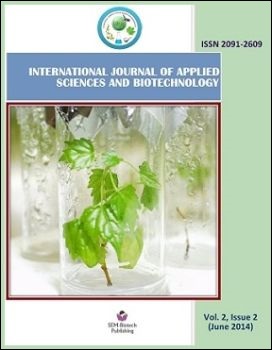Profile of Paediatric Poisoning at a Tertiary Care Center in Karnataka
DOI:
https://doi.org/10.3126/ijasbt.v2i2.10140Keywords:
Poisoning, Homicidal, Accidental, SuicidalAbstract
Objectives: To determine the profile and outcome of paediatric patients presenting with poisoning to a tertiary care center in Karnataka. Methods: Retrospectively we studied the PICU records of all the paediatric patients who presented with acute poisoning during the 4-years period from Feb 2010 to Jan 2014. All children aged less than 18 years with a definite history and suspected cases of poisoning were included. Results: 106 patients presented with acute poisoning during the study period. The majority of our patients were in the 0 - 6 year age group. Poisoning in this age group was most common with higher frequency in males, the ratio being 1.2:1. The agents most frequently used were hydrocarbons (43.1%), pyrethrine compounds 15.5%, Organo-Chlorine compounds 12.1%drugs, Organo-Phospherous compounds 12.1%, drugs 1.8%. In 1 - 6 year age group 54.7% cases were accidental in nature, whereas in the 12 - 18 year group 93.3% were suicidal. All patients were symptomatic and needed symptomatic or definitive treatment. 21 patients required mechanical ventilation. Almost 3/4th of patients underwent Gastric lavage. Specific antidote was given to 41 patients. 2 patients of OP poisoning died. Conclusion: Our study concluded that accidental poisoning is common in 0-6 year children, the common substance being used in rural areas was kerosene and in urban areas it was found to be pyrethrin compounds. Lack of awareness of parents regarding appropriate storage of these dangerous household products is the main cause. Measures should be taken to educate the parents and public in order to decrease the poisoning cases. Suicidal cases are increasing in adolescents and precipitating factors like exam fear, exam failure, love failure and parental pressure regarding studies needs counseling of both parents and children
DOI: http://dx.doi.org/10.3126/ijasbt.v2i2.10140
Int J Appl Sci Biotechnol, Vol. 2(2): 142-145




